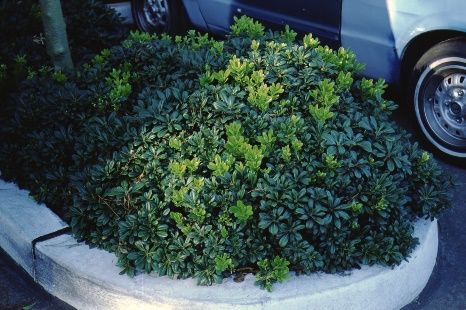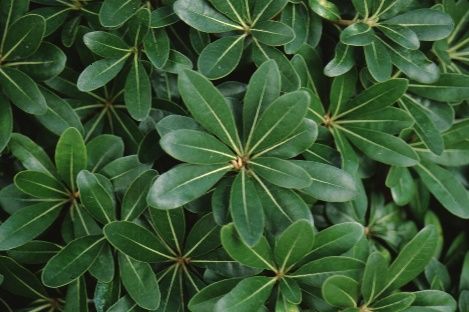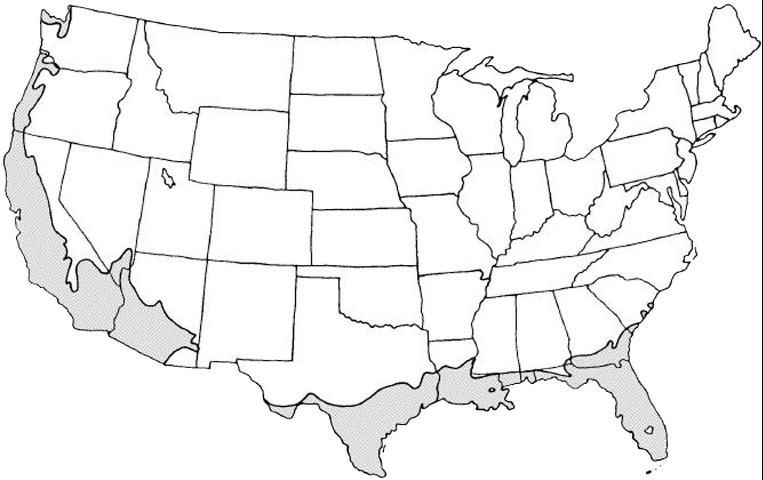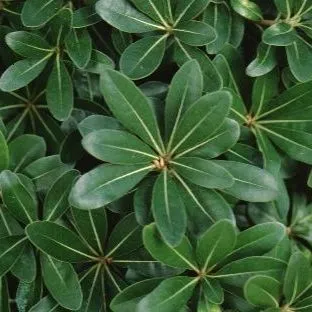Pittosporum tobira 'Wheeleri': Wheeler's Dwarf Pittosporum
Introduction
Wheeler's dwarf pittosporum is a 3- to 4-foot tall, evergreen shrub that is rounded in form. This shrub will form a low, compact mound of dark green foliage, but with age it can also be pruned to form a picturesque, miniature tree in a container. The thick, leathery leaves of this plant are about 4 inches long. These glossy, dark green leaves have revolute margins and very short, nearly inconspicuous petioles. The flowers of Wheeler's dwarf pittosporum are not noticeable, and this plant produces no fruit.

Credit: Edward F. Gilman, UF/IFAS

Credit: Edward F. Gilman, UF/IFAS
General Information
Scientific name: Pittosporum tobira 'Wheeleri'
Pronunciation: pit-tuss-SPOR-rum toe-BYE-ruh
Common name(s): Wheeler's dwarf pittosporum
Family: Pittosporaceae
Plant type: ground cover
USDA hardiness zones: 8B through 11 (Figure 3)
Planting month for zone 8: year-round
Planting month for zone 9: year-round
Planting month for zone 10 and 11: year-round
Origin: not native to North America
Invasive potential: not known to be invasive
Uses: mass planting; container or above-ground planter; trained as a standard; ground cover; suitable for growing indoors
Availability: generally available in many areas within its hardiness range

Credit:
Description
Height: 2 to 3 feet
Spread: 3 to 5 feet
Plant habit: round
Plant density: dense
Growth rate: moderate
Texture: medium
Foliage
Leaf arrangement: alternate
Leaf type: simple
Leaf margin: entire
Leaf shape: obovate
Leaf venation: pinnate
Leaf type and persistence: evergreen
Leaf blade length: 2 to 4 inches
Leaf color: green
Fall color: no fall color change
Fall characteristic: not showy
Flower
Flower color: white
Flower characteristic: spring flowering; pleasant fragrance
Fruit
Fruit shape: irregular
Fruit length: less than 0.5 inch
Fruit cover: dry or hard
Fruit color: red
Fruit characteristic: inconspicuous and not showy
Trunk and Branches
Trunk/bark/branches: not particularly showy; typically multi-trunked or clumping stems
Current year stem/twig color: gray/silver
Current year stem/twig thickness: medium
Culture
Light requirement: plant grows in part shade/part sun
Soil tolerances: alkaline; sand; acidic; loam
Drought tolerance: moderate
Soil salt tolerances: moderate
Plant spacing: 36 to 60 inches
Other
Roots: usually not a problem
Winter interest: no special winter interest
Outstanding plant: not particularly outstanding
Pest resistance: very sensitive to one or more pests or diseases which can affect plant health or aesthetics
Use and Management
This plant is wonderful for the front of shrub borders and is ideal for patios and terraces. It should not be planted next to or along a foundation because it does not tolerate poor drainage. Wheeler's dwarf pittosporum lends itself well to raised planters and containers and will provide a lovely background for annual beds. It makes a suitable tall ground cover planted on 4-foot centers. I have observed healthy plants most frequently along the coast where the wind helps keep the foliage and soils dry. Inland plantings of this cultivar do not appear to last very long.
This cultivar is not as cold hardy as the species and will be severely damaged at 10°F. Pittosporum tobira 'Wheeleri' should be planted in an area in which the topsoil has been prepared. The soil should be kept adequately moist, and the plant should be fertilized 2 to 3 times each year. Wheeler's dwarf pittosporum needs to be placed in an area of the landscape that receives full to partial sun. Pruning or shearing is not needed to maintain a neat, uniform shape. This cultivar is less tolerant to adverse growing conditions than the species. It can even be considered picky. Only plant if the soil drainage is excellent and a regular maintenance program can be provided including irrigation and fertilization.
Wheeler's dwarf pittosporum is commonly propagated by semi-hardwood or hardwood cuttings.
Pests and Diseases
This cultivar is more susceptible to leaf spot disease than the species and may be occasionally bothered by mealy bugs.



